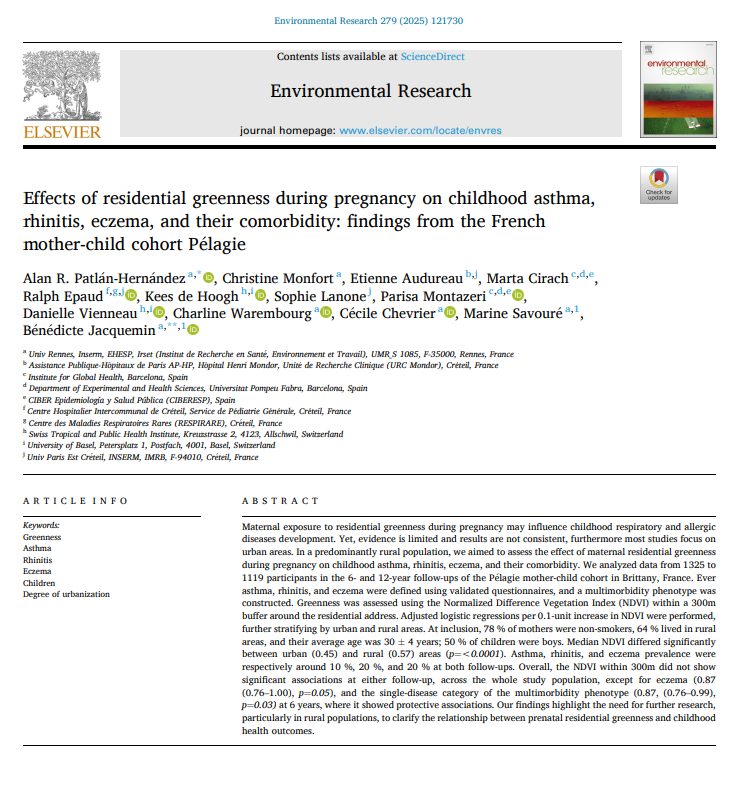Publication on Environmental Research
Effects of residential greenness during pregnancy on childhood asthma, rhinitis, eczema, and their comorbidity: findings from the French mother-child cohort Pélagie
Authors: Alan R. Patlán-Hernández, Christine Monfort, Etienne Audureau, Marta Cirach, Ralph Epaud, Kees de Hoogh, Sophie Lanone, Parisa Montazeri, Danielle Vienneau, Charline Warembourg, Cécile Chevrier, Marine Savouré, Bénédicte Jacquemin
Abstract
Maternal exposure to residential greenness during pregnancy may influence childhood respiratory and allergic
diseases development. Yet, evidence is limited and results are not consistent, furthermore most studies focus on
urban areas. In a predominantly rural population, we aimed to assess the effect of maternal residential greenness
during pregnancy on childhood asthma, rhinitis, eczema, and their comorbidity. We analyzed data from 1325 to
1119 participants in the 6- and 12-year follow-ups of the P´elagie mother-child cohort in Brittany, France. Ever
asthma, rhinitis, and eczema were defined using validated questionnaires, and a multimorbidity phenotype was
constructed. Greenness was assessed using the Normalized Difference Vegetation Index (NDVI) within a 300m
buffer around the residential address. Adjusted logistic regressions per 0.1-unit increase in NDVI were performed,
further stratifying by urban and rural areas. At inclusion, 78 % of mothers were non-smokers, 64 % lived in rural
areas, and their average age was 30 ± 4 years; 50 % of children were boys. Median NDVI differed significantly
between urban (0.45) and rural (0.57) areas (p=<0.0001). Asthma, rhinitis, and eczema prevalence were
respectively around 10 %, 20 %, and 20 % at both follow-ups. Overall, the NDVI within 300m did not show
significant associations at either follow-up, across the whole study population, except for eczema (0.87
(0.76–1.00), p=0.05), and the single-disease category of the multimorbidity phenotype (0.87, (0.76–0.99),
p=0.03) at 6 years, where it showed protective associations. Our findings highlight the need for further research,
particularly in rural populations, to clarify the relationship between prenatal residential greenness and childhood
health outcomes

